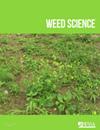海藻作为新型生物除草剂配方/开发的丰富天然来源的潜力
IF 2.1
2区 农林科学
Q2 AGRONOMY
引用次数: 0
摘要
最近,人们强调必须从使用合成化学除草剂转向使用从天然来源提取的低风险替代品。这样做的目的是降低或避免合成除草剂对环境的负面影响,并应对杂草物种对这些化学品产生抗药性的问题。因此,监管机构采取了更严格的措施,或完全禁止使用大多数合成除草剂。由于海藻是海洋环境中的丰富资源,有能力产生多种生物活性化合物,因此它们可以作为可持续可行的天然、低风险替代品/来源,用于探索潜在的植物毒性能力。这反过来又有助于提高或促进全球生物杀草剂市场有效解决方案的可用性。本综述强调了利用海藻作为新型生物农药控制和管理包括杂草在内的各种植物害虫以及发展可持续农业/林业实践的前景。更具体地说,本综述侧重于将海藻用作新型生物杀草剂开发的丰富天然来源,而多年来这一潜力一直未得到充分开发。然而,要充分挖掘海藻生物除草剂的潜力,并为其开发开辟一条潜在的道路,迫切需要加大研发力度。这是为了解决和克服这一新颖领域可能存在的制约因素,如海藻化学成分的可变性、制剂技术、海藻生物活性化合物的稳定性和功效、成本和可扩展性、环境因素等。本文章由计算机程序翻译,如有差异,请以英文原文为准。
The Potential of Seaweeds as a Rich Natural Source for Novel Bioherbicide Formulation/Development
Recently, there has been emphasis on the need to shift away from the use of synthetic chemical herbicides to low risk alternatives derived from natural sources. This is aimed at lowering or averting the negative impact synthetic herbicides have on the environment and to deal with the emergence of weed species becoming resistant to these chemicals. As a result, more stringent measures or an outright ban on the use of most synthetic herbicides have been put in place by regulatory bodies. As seaweeds are abundant resources in the marine environment that have the capacity to produce diverse bioactive compounds, they could serve as sustainably viable natural, low-risk alternatives/sources to explore for potential phytotoxic capabilities. This could in turn help to enhance or boost the availability of effective solutions in the global bioherbicide market.
This review highlights the prospects of using seaweeds as novel biopesticides for the control and management of various plant pests including weed species, and for the development of sustainable agriculture/forestry practices. More specifically, the review focuses on their use as a rich natural source for novel bioherbicide development, a potential that has remained underexplored for many years. However, to unlock the full potential of seaweed-derived bioherbicides and to create a potential path towards its development, increased research and development efforts are urgently needed. This is to tackle and overcome possible constraints posed in this novel area such as variability in seaweed chemical composition, formulation technologies, stability and efficacy of seaweed bioactive compounds, cost and scalability, environmental considerations, etc.
求助全文
通过发布文献求助,成功后即可免费获取论文全文。
去求助
来源期刊

Weed Science
农林科学-农艺学
CiteScore
4.60
自引率
12.00%
发文量
64
审稿时长
12-24 weeks
期刊介绍:
Weed Science publishes original research and scholarship in the form of peer-reviewed articles focused on fundamental research directly related to all aspects of weed science in agricultural systems. Topics for Weed Science include:
- the biology and ecology of weeds in agricultural, forestry, aquatic, turf, recreational, rights-of-way and other settings, genetics of weeds
- herbicide resistance, chemistry, biochemistry, physiology and molecular action of herbicides and plant growth regulators used to manage undesirable vegetation
- ecology of cropping and other agricultural systems as they relate to weed management
- biological and ecological aspects of weed control tools including biological agents, and herbicide resistant crops
- effect of weed management on soil, air and water.
 求助内容:
求助内容: 应助结果提醒方式:
应助结果提醒方式:


